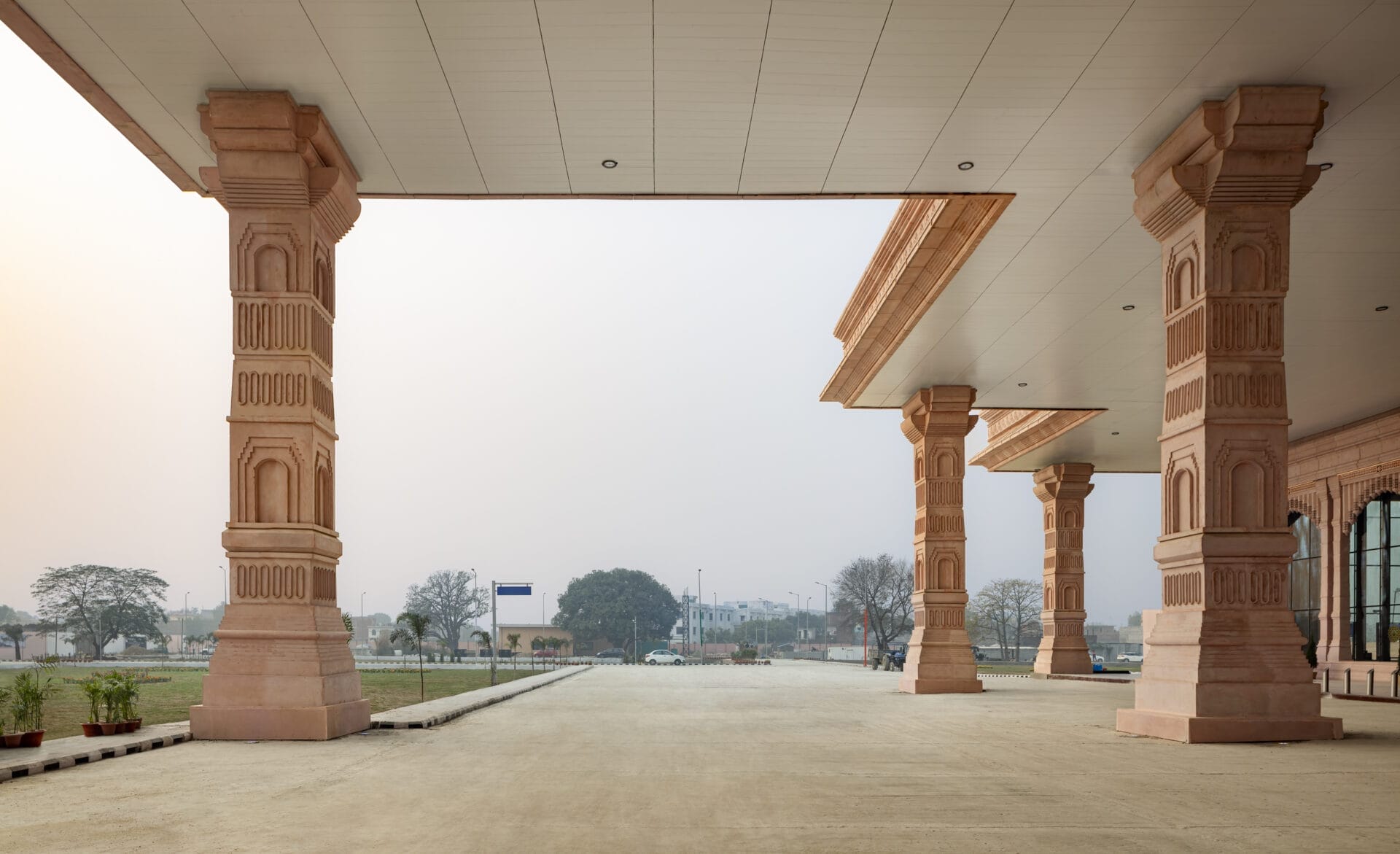In the heart of India, the newly unveiled Ayodhya Airport isn’t just a transportation hub; it’s a living testament to the nation’s cultural richness. Departing from conventional glass box architecture, the airport’s design intricately weaves together history, tradition, and sustainable practices. It stands as a beacon of cultural resurgence and economic growth in modern India, promising holistic community development and environmental consciousness.

Historical Integration and Architectural Marvel
Designed to echo the city’s rich heritage, Ayodhya Airport stands out with its intricate architectural details. The grand entrance, featuring a stepped shikar adorned with brass, welcomes passengers in the majestic Nagara style. The terminal’s mega columns, reminiscent of the Kandas of Ramayana, narrate tales of dedication and spirituality. Additionally, Toran dwars serve as symbolic entrances, captivating onlookers with their mythological references and intricate adornments.


Artistic Immersion and Symbolic Murals
The terminal building serves as a canvas for profound messages, with murals depicting scenes from the Ramayana, symbolizing courage, truth, and triumph. The Bow and Arrow mural symbolizes the courage to confront untruth while hexagonal light particles and strategically placed skylights enhance the sensory experience, guiding passengers while immersing them in the timeless tale of Lord Ram.
Sustainable Design and Environmental Consciousness


Ayodhya Airport pioneers sustainable practices in aviation with its eco-conscious design. Utilizing Glass Fiber Reinforced Concrete (GRC) materials, the airport embraces carbon neutrality, significantly reducing carbon emissions and contributing to environmental sustainability. This commitment to eco-friendly practices reflects India’s dedication to environmental conservation. The airport is GRIHA 4 star Certified.
A Gateway to Cultural Connectivity

Strategically positioned to bolster travel accessibility for devotees and tourists alike, Ayodhya Airport emerges as a pivotal landmark in India’s aviation landscape. With a fleet exceeding 100 aircraft and a peak-hour capacity accommodating over 750 passengers, Ayodhya Airport stands poised to serve a burgeoning populace and cater to the ever-expanding demands of air travel. Its two-storeyed structure harmoniously blends functionality with architectural elegance, echoing the sacred city’s storied past through its meticulously crafted elevational elements.
Expertise and Implementation
The transformative project was brought to life by STHAPATI, a renowned architectural practice based in New Delhi and Lucknow. With a track record of restoring significant sites across India, including airports in Leh, Jodhpur, and Jammu, STHAPATI’s expertise ensures Ayodhya Airport’s success as an infrastructural marvel and a symbol of pride for the aviation industry.
Fact Sheet
Firm Name: STHAPATI.
Design Team: Vipul B. Varshneya, Harsh Varshneya, Khushboo Bansal, Anuj Varshneya, Manish Gupta, in collaboration with the Airport Authority of India (AAI) and their planning and design team.
Location: Ayodhya, India
Built-up Area: 8000 Sqm
Photography: NOUGHTS AND CROSSES



















